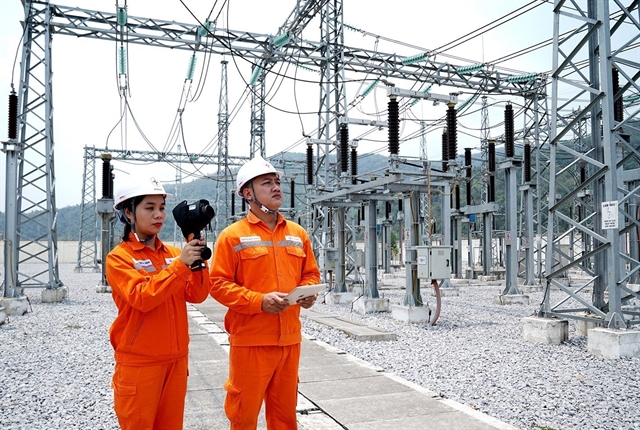 Life & Style
Life & Style

 |
| Two electrical technicians inspect equipment at a 110kV transformer station.— VNA/VNS Photo Trần Huy Hùng |
HÀ NỘI — National power consumption has surged to record levels in recent days, driven by a prolonged heatwave affecting all three regions.
National peak load reached a record high of 48,627MW at 2pm on Saturday. This surpasses the previous peak of 45,000MW set last year and the average observed last week.
Despite this new peak, experts predict that power consumption could climb even higher in the coming weeks, potentially setting new records and posing a significant challenge to the country's power grid.
According to the Electricity Regulatory Authority, the average daily power consumption for the April 15 to 21 week hit over 881 million kWh, up 2.4 million kWh compared to the previous week.
A cause for concern is the low water levels in hydropower reservoirs. In the northern region, water levels range from 25 to 80 per cent of the average level.
The situation is not better in the central region where 21 out of 27 reservoirs have water levels significantly below the average.
In the southern region, only Đồng Nai 2 and Trị An have higher-than-average levels whereas the others fall short of average by 24 to 74 per cent.
In response to the low water levels, the authority has implemented flexible water conservation measures and modifications to the transmission grid to ensure a stable supply during the hot season.
In the central and southern regions, the authority has deployed renewable energy plants, BOT power plants, coal-fired power plants and gas turbines to supplement the hydropower supply and conserve reservoir water.
The Vietnam Electricity (EVN) said it had developed two plans to raise the power output and electricity imports by 4.2 and 2.8 billion kWh, respectively.
However, the power reserve in the northern region is low and there is a risk of power shortages if adverse factors occur simultaneously, such as low water flow to hydropower reservoirs and coal-fired thermal power plants experiencing incidents.
EVN has also instructed its subordinate agencies to prepare coal and gas fuel reserves at the highest level to ensure readiness for power generation and coordinate with customers to leverage standby diesel generators. — VNS




